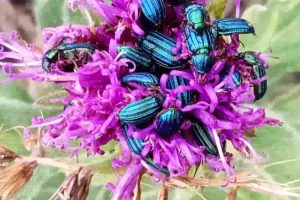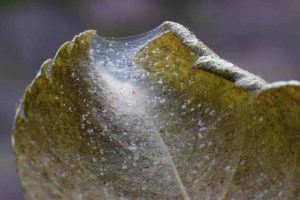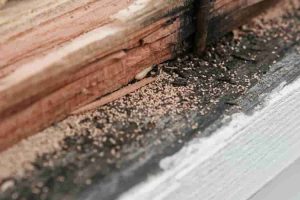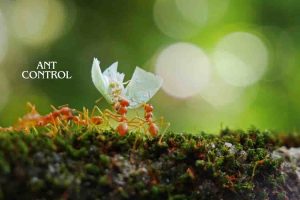Cricket infestations can disrupt the peace and comfort of our homes. These noisy pests not only cause sleepless nights but can also damage property and plants. Effective cricket pest control services are essential for maintaining a quiet and cricket-free environment.
We offer comprehensive cricket pest control solutions designed to meet your needs. Whether you are dealing with a minor cricket problem or a severe infestation, our professional team can help you identify the source and apply the best treatment. Our services ensure long-lasting results and complete satisfaction.
Don’t let crickets take over your home. By choosing to work with us, you are ensuring a safe, effective, and prompt resolution to your cricket issues. Explore our offerings and see how we can provide a peaceful and pest-free living space.
Identifying a Cricket Infestation
Crickets can be more than just noisy nuisances; they can damage belongings and create an uncomfortable environment. Recognizing the signs of an infestation early can help us address the issue promptly.
Common Signs of Cricket Presence
One of the first indicators of a cricket infestation is the constant chirping noise. Male crickets produce this sound to attract females. If the chirping is loud and persistent, it may indicate a significant problem. Another sign is finding chewed-up clothing or furniture. Crickets feed on fabrics and other materials, leaving behind irregular holes or edges.
Cricket droppings are another clue. They appear as small, dark specks and are often found in areas where crickets are active. Lastly, sightings of live crickets indoors can confirm their presence. We should check basements, kitchens, and other areas where crickets might hide.
Types of Crickets Commonly Found in Homes
Several types of crickets can invade our homes, including:
- House Crickets: Yellowish-brown with three dark bands on their heads. They prefer warm, moist environments.
- Field Crickets: Larger and darker, usually black. They are attracted to lights and may enter homes in search of food.
- Tree Crickets: Pale green or yellow, often found near plants and trees. They may enter homes if nearby vegetation is disturbed.
- Ground Crickets: Smaller and less noticeable, often brown. They tend to stay close to the ground and can be found in cracks and crevices.
Recognizing the type of cricket can help us determine the best control methods.
Difference Between Male and Female Crickets
Identifying male and female crickets can be helpful in understanding the infestation dynamics. Male crickets are distinguished by their chirping, as they rub their wings together to make the sound. They typically have more pronounced wing structures compared to females.
Female crickets, on the other hand, have a long, cylindrical tube called an ovipositor at the end of their abdomen, used for laying eggs. They do not chirp and are usually quieter. Observing the behavior and physical characteristics can help us in identifying and managing crickets more effectively.
By paying attention to these signs and differences, we can better understand the extent of a cricket infestation and take appropriate action to mitigate their impact.
Preventive Measures to Keep Crickets Away
To prevent crickets from invading our homes, it’s essential to focus on sealing entry points, managing moisture, and maintaining proper vegetation. Outdoor lighting plays a significant role as well.
Sealing Entry Points and Reducing Moisture
Sealing doors and windows is vital to prevent crickets from entering our homes. We should ensure that all gaps around doors and windows are sealed using weatherstripping. This not only blocks crickets but also other pests. It’s crucial to inspect and repair any cracks in the foundation walls and utility openings.
Another important step is to reduce moisture in and around the home. Crickets thrive in damp environments, so fixing leaky pipes and using dehumidifiers in basements can help. We must also ensure that gutters and downspouts direct water away from the foundation to keep these areas dry.
Proper Vegetation and Lawn Management
Maintaining a well-manicured lawn and properly managed vegetation is key. Crickets often hide and breed in overgrown grass and piles of debris. We can minimize hiding spots by keeping our lawns mowed and trimming bushes regularly.
Removing leaf litter, woodpiles, and other debris from around our homes also helps reduce cricket habitats. It’s important to dispose of any organic waste and keep compost piles away from the house. Regularly inspecting and cleaning garden areas ensures that crickets don’t find suitable places to settle.
Importance of Reducing Outdoor Lighting
Crickets are attracted to bright lights at night, so we should consider reducing outdoor lighting. Using motion-sensor lights can help minimize continuous illumination, making our homes less attractive to crickets. We can opt for yellow sodium vapor lights which are less likely to attract crickets compared to traditional white lights.
Placing light fixtures away from doors and windows can also reduce the chances of crickets being drawn inside. Adjusting the direction of outdoor lights to minimize light spill helps keep these pests at bay. Overall, managing outdoor lighting effectively is a simple yet powerful way to deter crickets from our property.
Professional Cricket Control Techniques
Effective cricket control often requires a combination of methods to ensure long-term success. This includes careful inspection and monitoring, targeted pesticide application, and thorough exclusion and sanitation practices.
Inspection and Monitoring Strategies
We begin with a thorough inspection to identify the extent of the cricket infestation. This step involves checking common entry points like windows, doors, and cracks in the foundation. We also examine attics, basements, and other dark, damp areas where crickets are likely to hide.
Monitoring traps can be placed to capture crickets and assess activity levels. These traps help us determine the species and estimate the population size. Regular monitoring is essential to evaluate the effectiveness of our treatment and adjust strategies as needed.
Regular inspections should be a part of any cricket control plan. By identifying and addressing issues early, we can prevent small problems from becoming large infestations.
Application of Cricket-Specific Pesticides
Our use of cricket-specific pesticides is precise and informed by our intimate knowledge of cricket behavior. These products are carefully selected to target crickets while minimizing harm to non-target species and the environment.
We apply these pesticides directly to areas where crickets are most active. This can include baseboards, entry points, and other areas identified during our initial inspection. Safety is a top priority, so we ensure that all pesticides are applied following strict guidelines.
Using the right amount and type of pesticide is crucial for effectiveness. Too little may not eliminate the problem, while too much can pose risks to humans and pets.
Exclusion and Sanitation Methods
Exclusion and sanitation are vital components of our cricket control strategy. By sealing gaps and cracks in walls, doors, and windows, we prevent crickets from entering the building. This may involve installing door sweeps, weather stripping, and repairing screens.
Sanitation involves removing food sources and reducing moisture levels inside and outside the building. Keeping areas clean and dry makes them less attractive to crickets. This can include regular cleaning, fixing leaky pipes, and maintaining proper ventilation in damp areas.
Both exclusion and sanitation are essential for long-term control, making the environment less hospitable for crickets and reducing the likelihood of re-infestation.
Aftercare and Preventing Future Infestations
Proper aftercare is essential to ensure that crickets do not return. It involves maintaining cleanliness and addressing potential entry points. Regular inspections also help in early detection of new infestations.
Routine Checks and Maintenance
We should start with keeping our homes clean. Regular vacuuming gets rid of any food crumbs that might attract pests. It’s important to wipe down surfaces and remove clutter to prevent crickets from finding hiding spots.
In addition, we need to check and fix any leaks or damp areas. Crickets are attracted to moisture, so eliminating these spots by repairing pipes and using dehumidifiers is crucial.
Lastly, we should inspect for potential entry points. Look for cracks and holes in walls, doors, and windows. Sealing these gaps prevents crickets from entering our homes. If you’re unsure, a pest controller can help identify and address these issues efficiently.
Remember, combining cleanliness with regular inspections and proper maintenance significantly reduces the likelihood of future infestations.
On-Time Service

5 STAR SERVICE BASED ON 100+ GOOGLE REVIEWS
PET & FAMILY FRIENDLY TREATMENT

ALL YEAR-ROUND PROTECTION
Take Back Control Now
8
REASON TO CHOOSE SAFE PEST CONTROL
- Guarantee protection all year-round
- 30 Years Collective Experience
- An impeccable reputation across Sydney's Suburbs
- Certified treatments & written Warranty On all work carried out
- Family Owned & Operated
- Rated #1 Pest Control In Sydney NSW
- No Mess, No Smell
- Family & Pet Friendly Treatments
REQUEST A QUOTE







